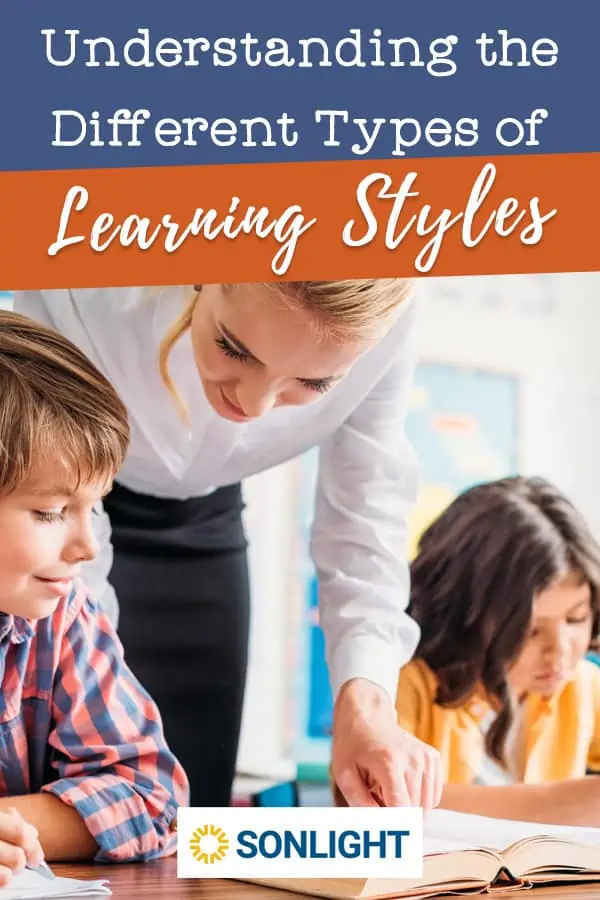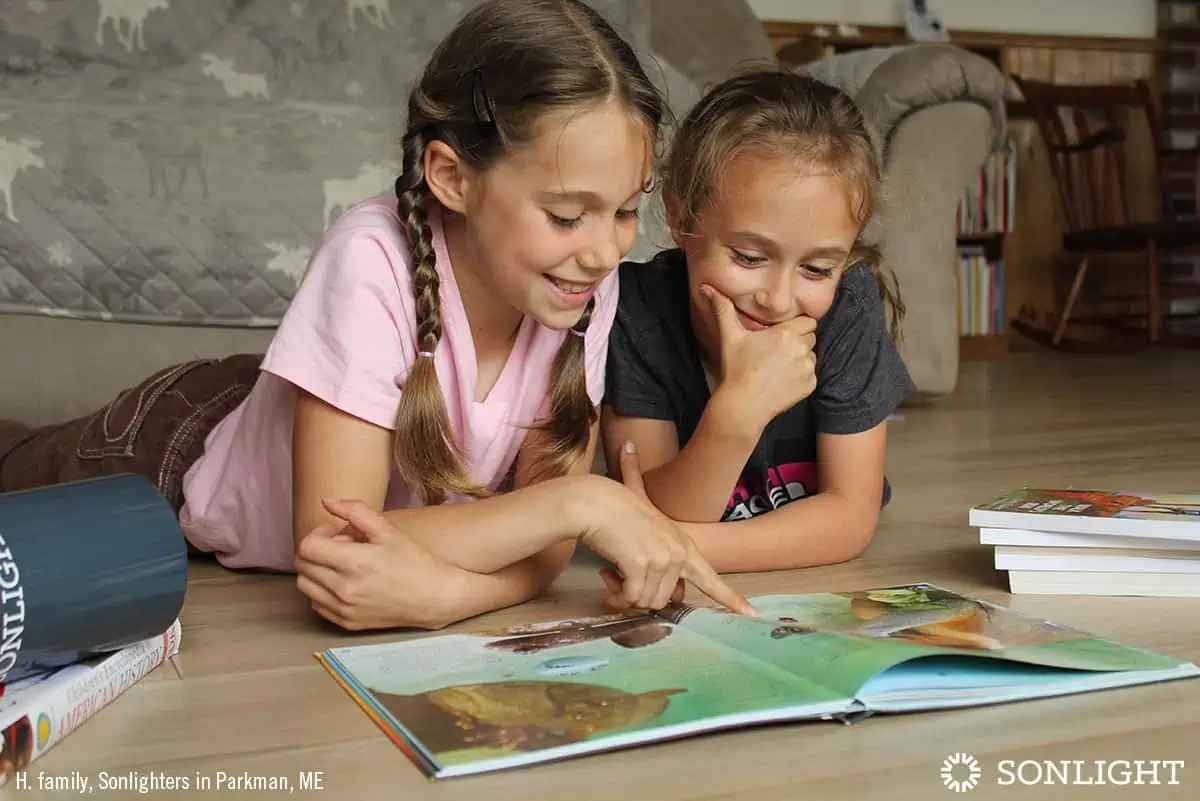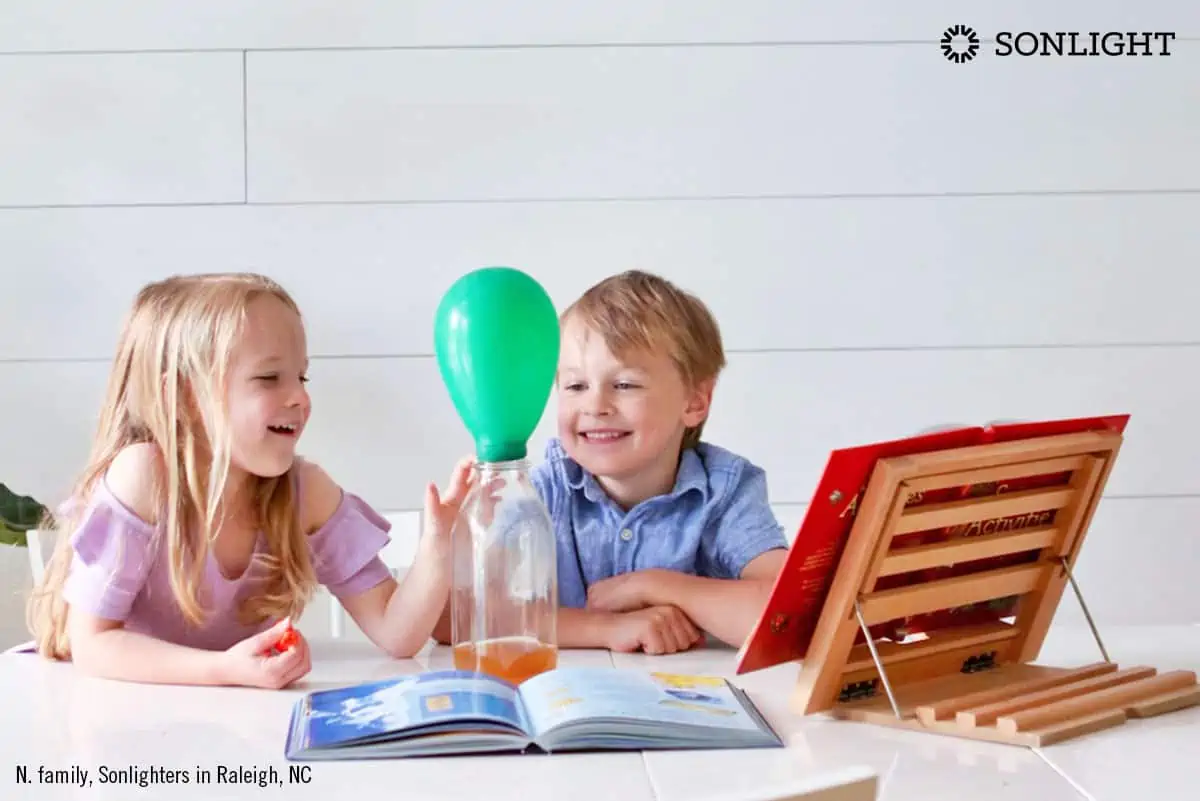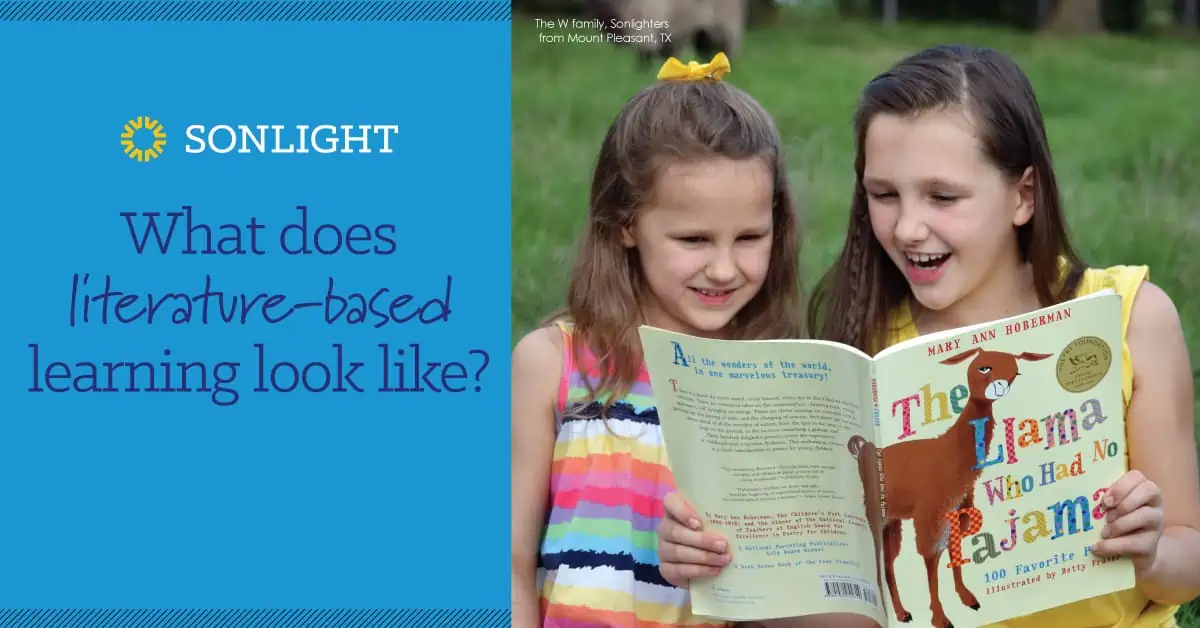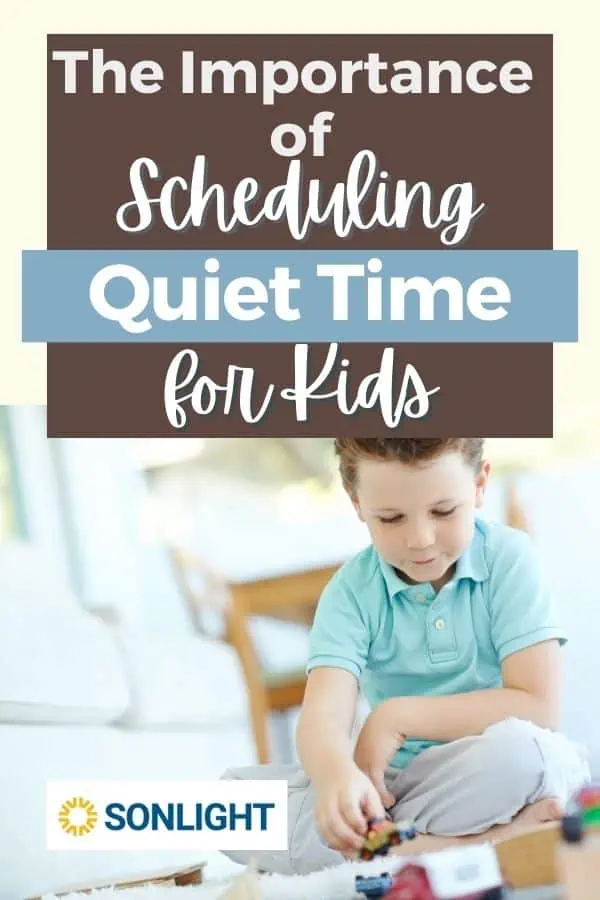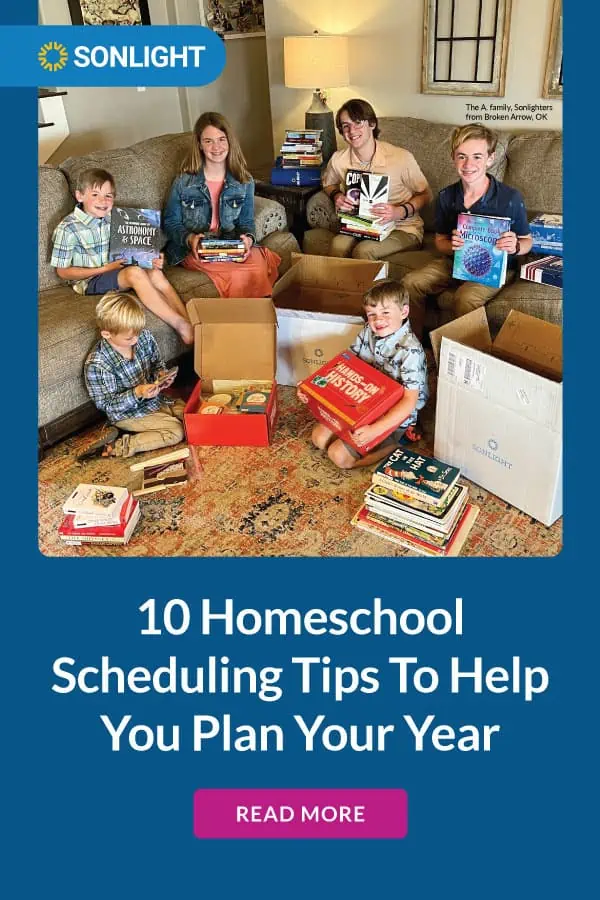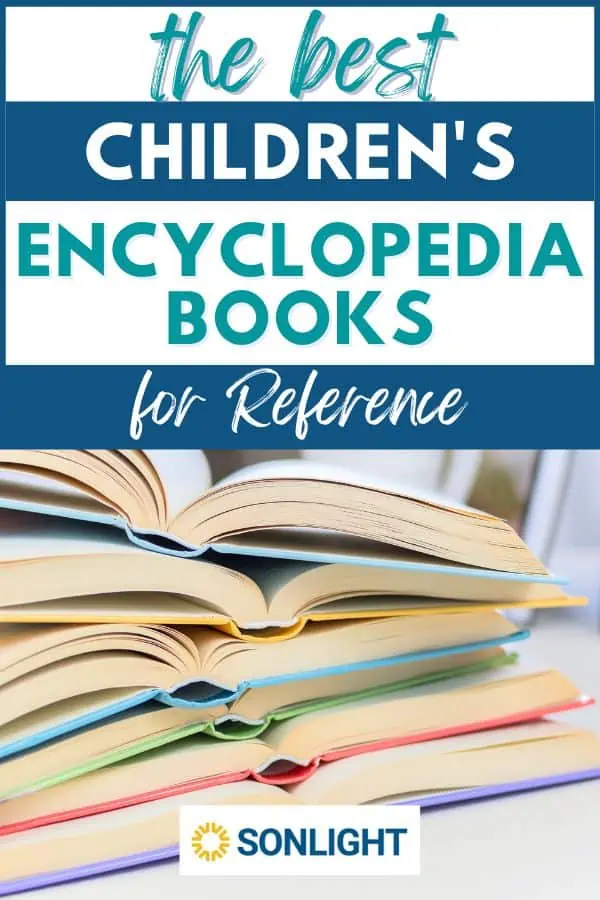Understanding the Different Types of Learning Styles
Published:
May 26, 2022

Contributor:
Sonlight
Disclosure: This post may contain affiliate links, meaning if you decide to make a purchase via my links, I may earn a commission at no additional cost to you. See my disclosure for more info.
Are you familiar with the different learning styles? If you’ve ever wondered what is the best way to teach your child, then this post will help you make sense of all the types of learning styles and how you can adjust your homeschooling to meet your student’s needs.
What Are the Different Learning Styles?
Individual learning styles refer to the way your child interacts with and understands new concepts. What type of learner is he? What is your child’s preferred way of understanding new information? When you can adjust your teaching to present subject matter in the way that’s most beneficial for each type of learner, then you will see the best possible results.
Here’s an overview of the different styles of learning and what this might look like in a homeschool setting.
Visual or Spatial Learner
Visual learning is also referred to as visual-spatial intelligence.
These types of learners like to see what they’re learning and learn best through pictures or visual aids. When a child’s dominant learning style is visual or spatial, they can see what they’re learning in their head. Many of these learners have vivid imaginations.
In a homeschool setting, a visual learner would rather watch an instructional video about how to diagram a sentence rather than listen to a parent explain the process verbally. A child with a visual learning style will enjoy color, diagrams, pictures, maps, and flowcharts.
This type of student might have trouble listening to instructions or lectures, but if they can write down what they hear from a lecture, then that will work better for them.
When homeschooling a visual learner, encourage them to make outlines, draw pictures and diagrams to understand the material, and use flashcards to help them learn.
Aural or Auditory-Musical Learners
Auditory learners have a strong preference to learn through listening. A student with an auditory learning style will learn best by listening to a lecture and probably would not prefer to take notes.
Students with this type of learning style enjoy sharing answers out loud and discussing what they’re learning. These children also tend to excel at acting and speaking. Aural learners have a good memory for things they’ve heard. Kids with auditory learning styles will benefit from talking out loud about the main concepts of a lesson, studying with a friend, and reciting things they want to remember.
The weaknesses of an auditory learning style include having a harder time processing visual information. Aural learners are sometimes slower readers. So when homeschooling an aural learner, it can be helpful to have them read out loud. Be patient with their slower pace at processing the words on the page. Aural learners love audiobooks! Use that to your advantage, as your auditory learner will be learning in their strength with an audiobook.
Kinesthetic Learner
Kinesthetic learners, or tactile learners, prefer bodily movement and physical activity to help them learn. This might look like providing manipulatives for your student to touch and move in order to understand the math lesson.
Kids that have a kinesthetic learning style prefer hands-on activities and need to learn by doing.
These kids need physical movement to the degree that they may have a hard time sitting still. You might think that kinesthetic learners always require lots of opportunities for large-scale movement, but sometimes even utilizing small movements is powerful. For a kinesthetic learner, his attention follows his hands. Kids that prefer a kinesthetic learning style will appreciate smaller lessons with breaks in between.
Verbal or Linguistic Learner
Verbal learners prefer using words and language in order to learn. They are usually good writers and strong readers, enjoy a large vocabulary, and tend to do well in a traditional school setting. These linguistic learners excel in reading, writing, listening, and speaking. Their personal learning style tends to prefer activities where they can use their linguistic skills to engage with new information.
These verbal learners enjoy making connections or associations with new concepts in order to understand and retain this new information. So while a visual learner would appreciate a flowchart to present new information, a linguistic learner would prefer a written or spoken explanation of the material. When you’re homeschooling a linguistic learner, provide a lot of opportunities to discuss new information.
Logical or Mathematical Learner
Logical learners love connections, patterns, and order. They like to make sense of information. These students usually excel at math. Mathematical learners also tend to be organized, enjoy statistics and facts, and excel at critical thinking.
These students can analyze a problem and come to a solution through their ability to see connections. Students that show strengths in this area are very systematic. When you’re homeschooling logical learners, include a lot of data and facts and encourage lots of critical thinking.
Social or Interpersonal Learner
Of course, social learners are the social butterflies! They love teamwork, being around people, and sharing their ideas with friends. For best results, these students enjoy being a part of a study group or group discussions. Interpersonal learners love role play.
They also love to talk through ideas with others. So ask your social learner for their opinion and be ready to enjoy bouncing ideas around. Your social learner will do well in a homeschool co-op or group where she can interact with her peers. Interpersonal learners appreciate being out and about in the community instead of stuck at home.
Solitary Learner
Now, the solitary learner doesn’t mind if she’s home all week with her nose in a good book. Solitary learners like to learn independently, and because of this, they are often very self-motivated.
These students have a more difficult time with group work or loud and overwhelming learning environments. Solitary learners enjoy setting individual goals and are usually fairly organized and can meet those goals. When you’re teaching solitary learners, you need to ask them questions to check in on what they’re thinking. While they do prefer to learn alone, it’s important to keep an ongoing dialog with them.
How to Homeschool Different Types of Learners
The challenge in homeschooling is how to take your own learning style and also the mix of learning styles in your home and find a good fit for everyone. You want your homeschool method to meet the individual needs of your kids. But what is the most effective way to do this?
It really does come down to your homeschool curriculum choices. Is your curriculum flexible enough to be used in multiple ways?
For example, literature-based homeschooling can meet various learning styles by pulling out the strengths of each style:
- Encourage your visual learner to draw a colorful flowchart of the plot line and illustrate different scenes from the book.
- Your aural learners will enjoy the read-aloud time and discussing the book out loud with the family.
- Verbal learners might volunteer to read the book for the whole family! They’ll also love to write an opinion piece about the story.
- Logical learners can pick up on the connections between the living book you’re reading and the history lesson. How about the plot? They’ll see the conflict in the story and be able to discuss solutions.
- Your social learners will enjoy the family read-alouds along with participating in a role play after you read a chapter.
- Finally, your solitary learner might enjoy a quiet corner and a small project to keep their hands busy while participating in the read-aloud. Or, let them read alone on the hammock, then come back and discuss it with you.
How Sonlight works for all learning styles
The beauty of using Sonlight curriculum in your homeschool is that it can be flexible enough to work with each specific learning style. Plus, Sonlight’s Instructor’s Guides bring you ready-made lesson plans for using various teaching methods to help your kids through the learning process. So, no matter the learning style strengths or weakness of your kids, you can experience different ways of learning with your kids using Sonlight materials.
Let’s start with the verbal or linguistic learner. Because Sonlight uses a literature-based homeschool method, your linguistic learners will be right at home reading living books. They will love the methodology of Sonlight.
But your social learner will enjoy the family-style lessons that you can have based on the shared History/Bible/Literature program that you can use with multiple ages. Then, your aural learner will appreciate the discussions you have around each living book. The Instructor’s Guides will help you know how to dialog with your children about the literature selections.
Your kinesthetic kids aren’t left out with Sonlight curriculum! Grab the hands-on History Project Kits and the Discover & Do Science Experiment Kits for engaging learning. Your logical learner will appreciate the emphasis on historical understanding, while he sees patterns and connections through events in history. Finally, your solitary learner will love to know that he can grab his favorite book and head to a quiet location to get lost in the story.
Sonlight is customizable to your unique kids and their learning styles. So you can work with your child’s learning strengths, enjoy a literature-based curriculum, and actually enjoy the homeschool journey.

